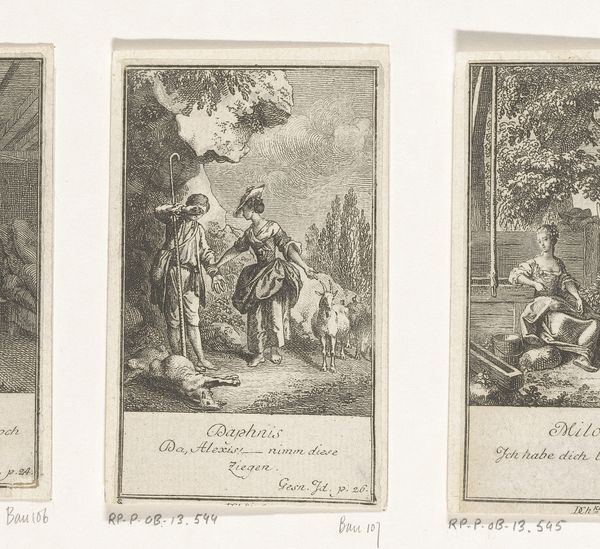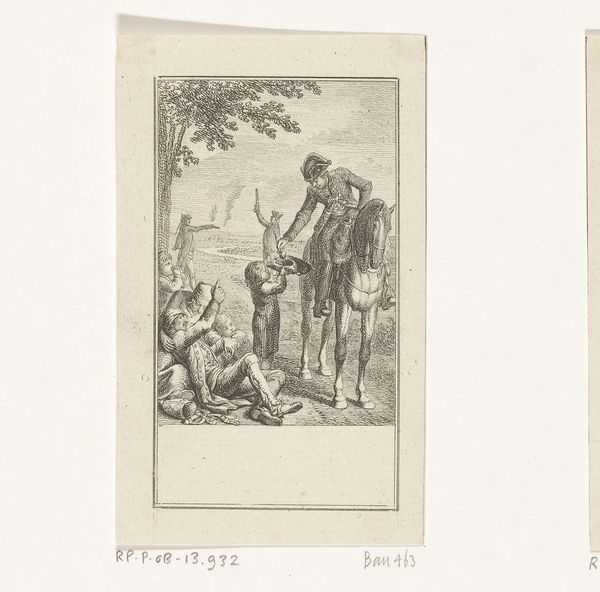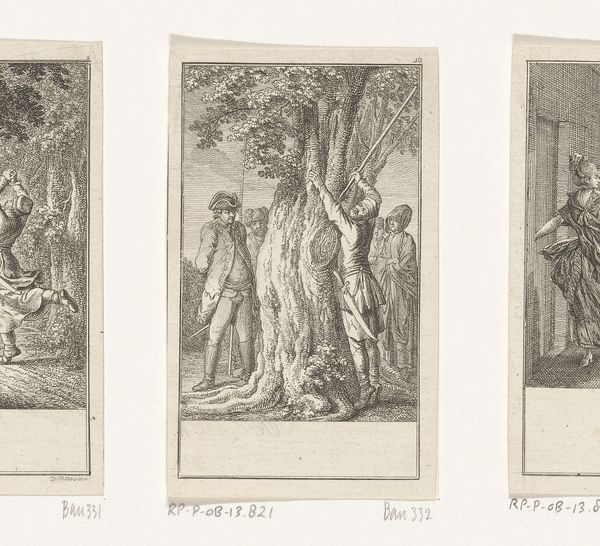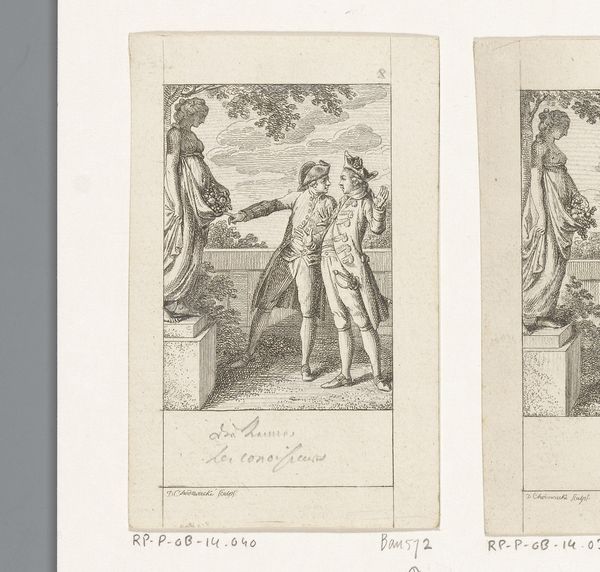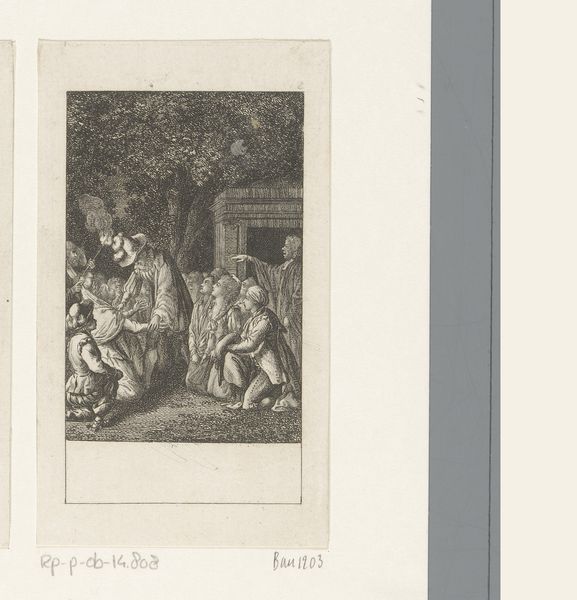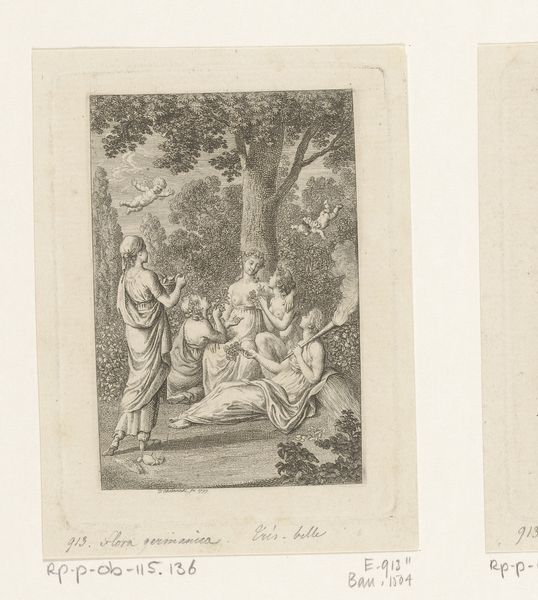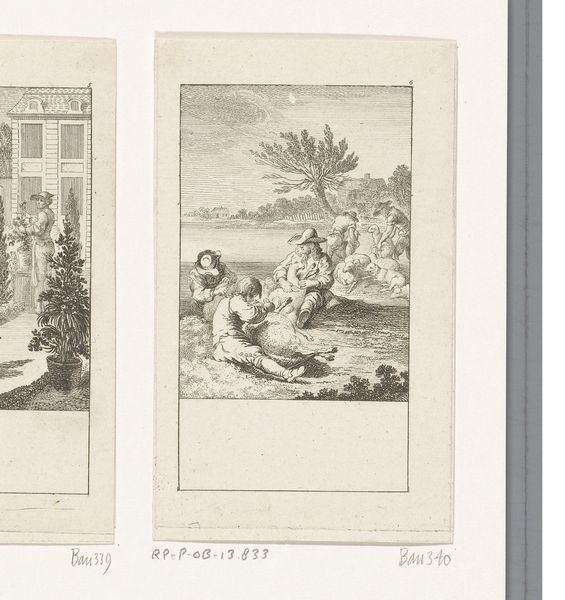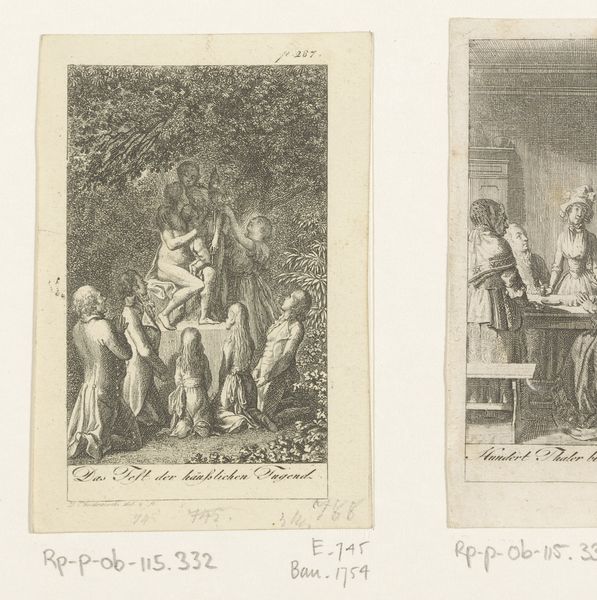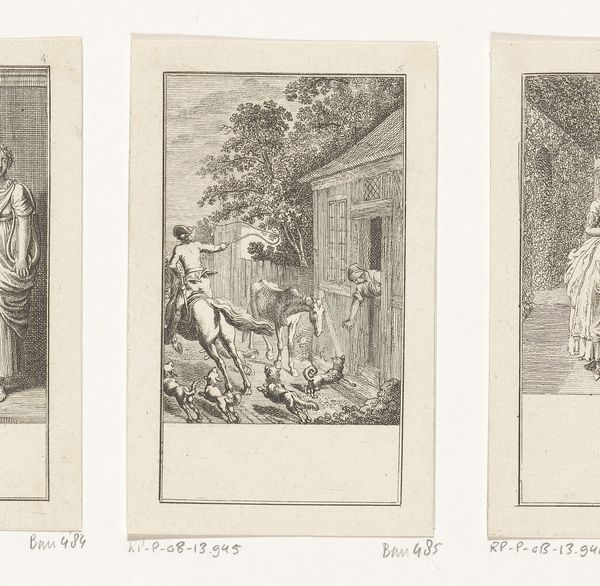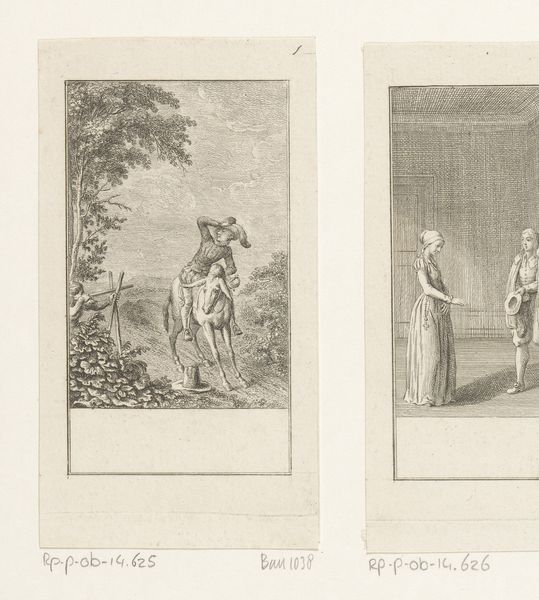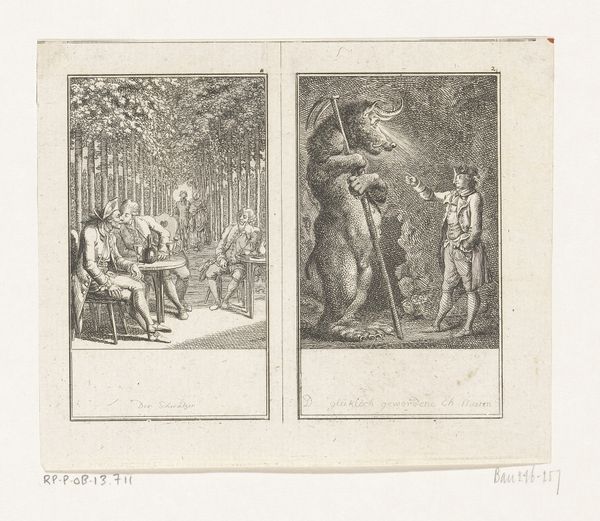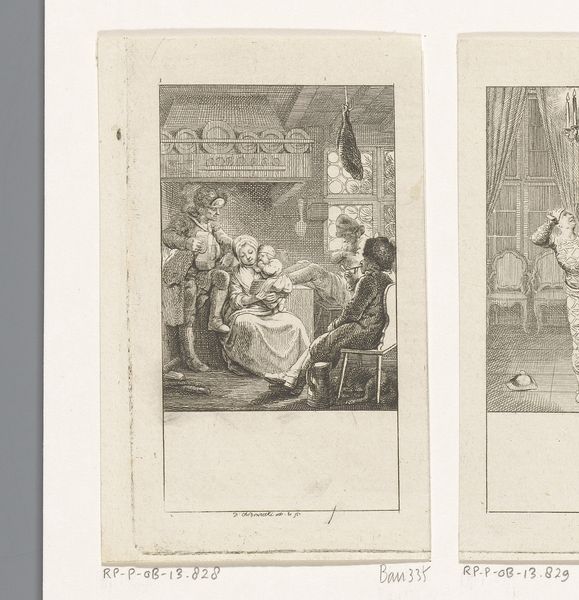
Dimensions: height 101 mm, width 60 mm
Copyright: Rijks Museum: Open Domain
Curator: We’re standing before “Ruiter geeft een arme jongen geld,” or "Horseman Giving Money to a Poor Boy," an engraving by Daniel Nikolaus Chodowiecki, created in 1778. The artwork resides here at the Rijksmuseum. Editor: Ah, yes, Chodowiecki. My initial thought: austere generosity. Look at that rigid horseman contrasted against the huddled poverty on the ground, as if compassion is something dutifully discharged from a great height. Curator: The piece certainly establishes a social hierarchy, doesn't it? The lines of the engraving, so meticulously rendered, define class distinctions. Note how Chodowiecki uses stark contrast to separate the wealthy rider from the destitute figures, really emphasizing their different realities. Editor: Exactly! It feels almost clinical in its portrayal of charity, lacking warmth. More an exercise in observation than empathy. The line work, although skillfully precise, reinforces that sense of emotional detachment. There’s such clarity of intent, you almost suspect judgment in those finely etched lines. It is so incredibly precise. Curator: The setting also plays a crucial role. The expansive landscape dwarfs the figures, rendering their plight almost insignificant against the backdrop of nature. Also consider the technique, the crisp lines of the engraving allow for intricate detail and precision. That’s the brilliance of baroque aesthetics at work here. Editor: Indeed. It's a carefully constructed stage, with everyone playing their part. Even the distant figures seem to be observing the transaction as part of a performance. It’s not as human as it could be and that bothers me in such scenes of intended connection and exchange. Curator: Perhaps Chodowiecki meant to critique that very performance. By presenting this transaction with such formality, he invites us to question its true motivations. He could have aimed to reflect a very present hypocrisy of charitable practices. Editor: An intriguing possibility! It flips my whole view around this piece! Ultimately, the emotional pull comes not from witnessing heartfelt altruism but from an observation that we must analyze much more, perhaps ourselves most of all. It goes beyond its literal form. Curator: Precisely. So, what seems initially like a straightforward depiction of charity reveals a deeper complexity when you consider it under a philosophical lens. Thank you. Editor: An incredibly illuminating and somewhat melancholic, exchange, wouldn’t you agree? It forces me to view social relations, baroque conventions, and the work itself through quite different lenses.
Comments
No comments
Be the first to comment and join the conversation on the ultimate creative platform.
